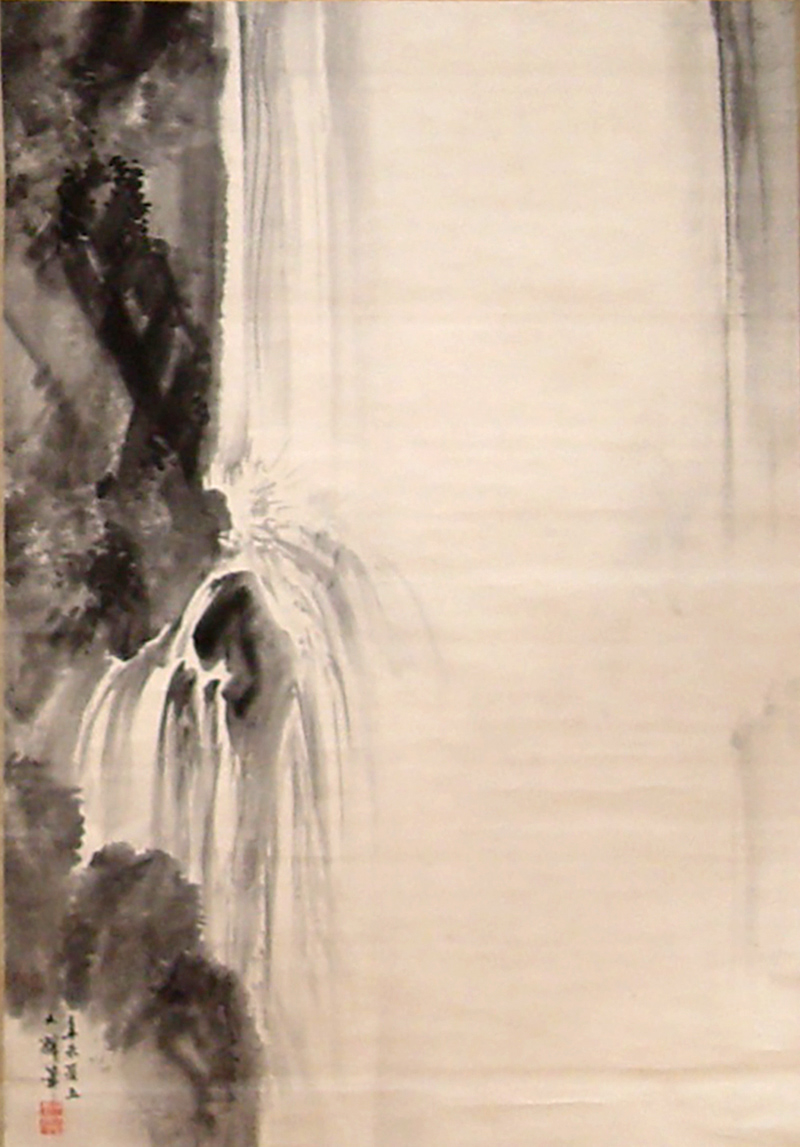

JAPAN (1808 – 1877) Large Waterfall, 1871 Shiokawa Bunrin was born in Kyoto as the son of a samurai. At his father’s death he moved to relatives in Fushimi, where he started to study painting with a local artist called Toryō at the age of fourteen. Later, he was a pupil of Okamoto Toyohiko and also studied nanga style painting and western style painting. Little is known of his early career until the 1850’s when he appears as an established artist working in the Imperial Palace. Unfortunately, many of his works from this period can no longer be traced. During the chaotic years before the Meiji restoration Bunrin stayed away from the Kyoto scene and spent a lot of time studying the collections of the many temples and shrines in the Kyoto region. He also got acquainted with western style painting, from which he absorbed those elements which he could fuse into his own, like the rendering of perspective, atmosphere and light. He specialized in landscapes. His style was more western than that of his contemporaries and he explored many new techniques. He was a major artist whose style had great influence on the Kyoto style of painting in the early Meiji era, particularly that of Kishi Chikudō, Morikawa Sobun, Mochizuki Gyokusen and Takeuchi Seihō. He also played an important role in establishing contacts with the new Meiji government, whose new rules greatly affected the Kyoto art world and the lives of artists. He helped establish the new Kyoto Exhibition in which he and his pupils contributed paintings and calligraphy. Later he became a judge of the painting section. He also helped establish a cooperative art-gallery where local artists held monthly exhibitions and sold their work directly to the public. Freely executed, this abbreviated composition dramatically emphasizes the single motif of a waterfall on a large scale. Soft, wet washes and strokes of ink of varying tonalities define the work which bears a distinct lack of outline. The painting is dated the fourth year of the Meiji period, 1877. The box has been annotated by Kakiuchi Unrin (1845-1919) who was a student of Bunrin. Ink on paper handscroll 84 x 45 in. (213 x 113 cm.) $2900
